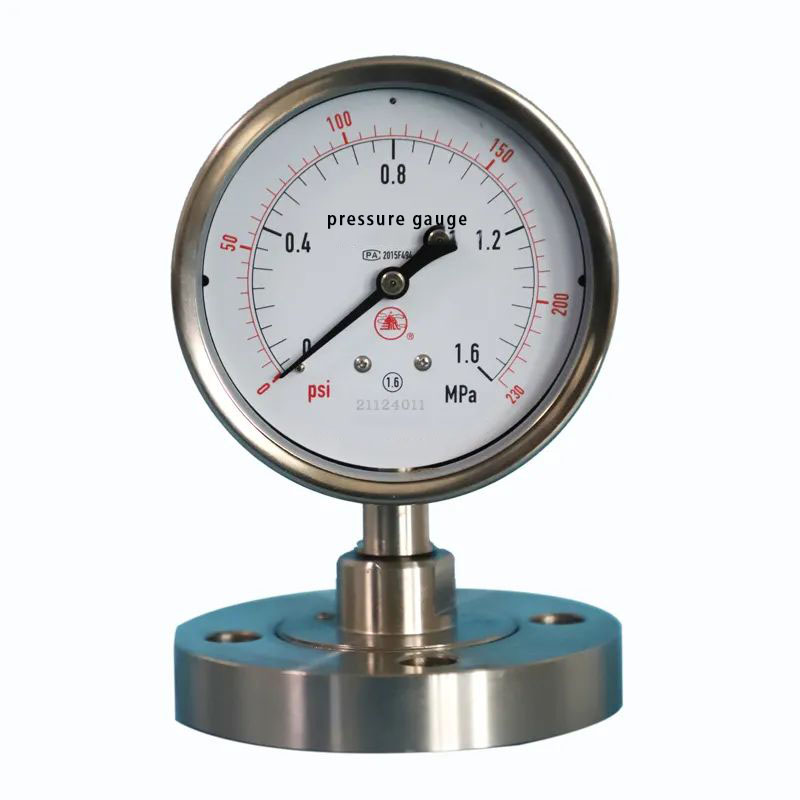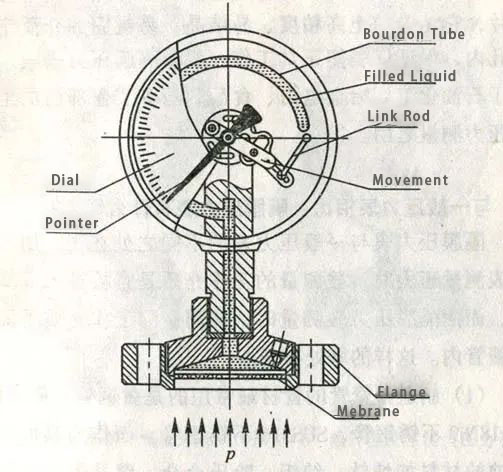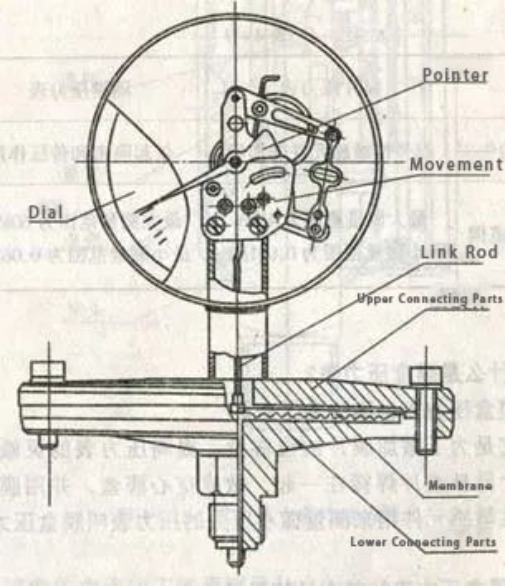YE series micro pressure gauges/membrane box pressure gauge
Cat:Pressure Gauge
◆ Model:YE60 YE100 YE150 ◆ Use: Membrane box pressure gauge is also called micro pressure gauge....
See DetailsDiaphragm Pressure Gauge

In daily work, such situations often occur where users actually need diaphragm pressure gauges, but in contracts or during phone conversations, they mention membrane pressure gauges. The reason for this is that these two types of pressure gauges have the same appearance. Now, let's briefly introduce the main differences between the two types of gauges.
The working principle of the diaphragm pressure gauge
When the diaphragm pressure gauge measures pressure, the measured working medium directly acts on the isolation diaphragm. The diaphragm undergoes upward deformation. The medium pressure is transmitted to the spring tube through the filling liquid inside the spring tube, causing the end of the spring tube to undergo elastic deformation. With the help of the linkage mechanism, the gear shaft of the mechanism is driven to rotate, thereby causing the pointer to indicate the measured pressure value on the scale.

The working principle of the low pressure diaphragm gauge
Under the influence of pressure, the measured working medium directly acts on the elastic diaphragm. The diaphragm undergoes elastic deformation upwards (for measuring positive pressure) or downwards (for measuring negative pressure). Through the connecting rod mechanism fixed at the center of the diaphragm, it drives the gear shaft of the mechanism to rotate, thereby causing the pointer to indicate the measured pressure value on the scale.

The main differences between the two types of pressure gauges are:
(1) Different elastic elements:
The elastic element of the diaphragm pressure gauge is a spring tube, while the diaphragm only serves as a separator. The elastic element of the low pressure diaphragm gauge is a corrugated diaphragm. The measured pressure acts on the diaphragm, causing it to undergo an elastic deformation upwards (or downwards). The pressure value is indicated through the linkage mechanism welded to the diaphragm.
(2) Different precision grades:
The diaphragm pressure gauge usually has an accuracy class of 1.6; while the low pressure diaphragm gauge has an accuracy class of 2.5.
(3) Different measurement ranges:
Diaphragm pressure gauge measurement range:
| Range (MPa) |
0~0.1 0~0.16 0~0.25 0~0.4 0~0.6 0~1 0~1.6 0~2.5 0~4 0~6 0~10 0~16 0~25 0~40 |
Low pressure Diaphragm gauge measurement range:
| Range (KPa) |
Negative Pressure:-60~0 -40~0 -25~0 -16~0 -10~0 -6~0 -4~0 -2.5~0 -1.6~0
|
| Range (MPa) |
Vacuum:-0.1~0
|
(4) Different temperature ranges for use:
Diaphragm pressure gauges can be designed with radiator or hose structures and are used to measure high-temperature environments. However, low pressure diaphragm gauges, due to their linkage transmission mechanism, cannot use cooling devices.
Conclusion:
When measuring the pressure of generally clean gases, water or oil liquids, stainless steel pressure gauges can be selected. However, if the measured medium has strong corrosiveness (such as hydrochloric acid, moist chlorine gas, iron oxide), high viscosity (such as latex), is prone to crystallization (such as salt water), prone to solidification (such as hot asphalt), or contains solid suspended matter (such as sewage), then a pressure gauge is no longer suitable. Even the 316L stainless steel tube will be corroded by hydrochloric acid. The suspended matter or impurities in asphalt and sewage will quickly block the pressure gauge's pressure guiding holes, causing the instrument to lose its functionality.
Therefore, in these conditions, these two types of non-contact pressure gauges are very suitable. You can choose different corrosion-resistant diaphragm membrane materials according to different strong corrosive media to achieve the purpose of corrosion prevention. Due to the presence of the diaphragm membrane, it can prevent strong corrosive, high viscosity, easily crystallizing and easily solidifying media from flowing into the pressure guiding hole, ensuring that the instrument can work normally. Therefore, based on the actual working pressure, the usage habits of the enterprise, choose the appropriate type of diaphragm pressure gauge or membrane pressure gauge."